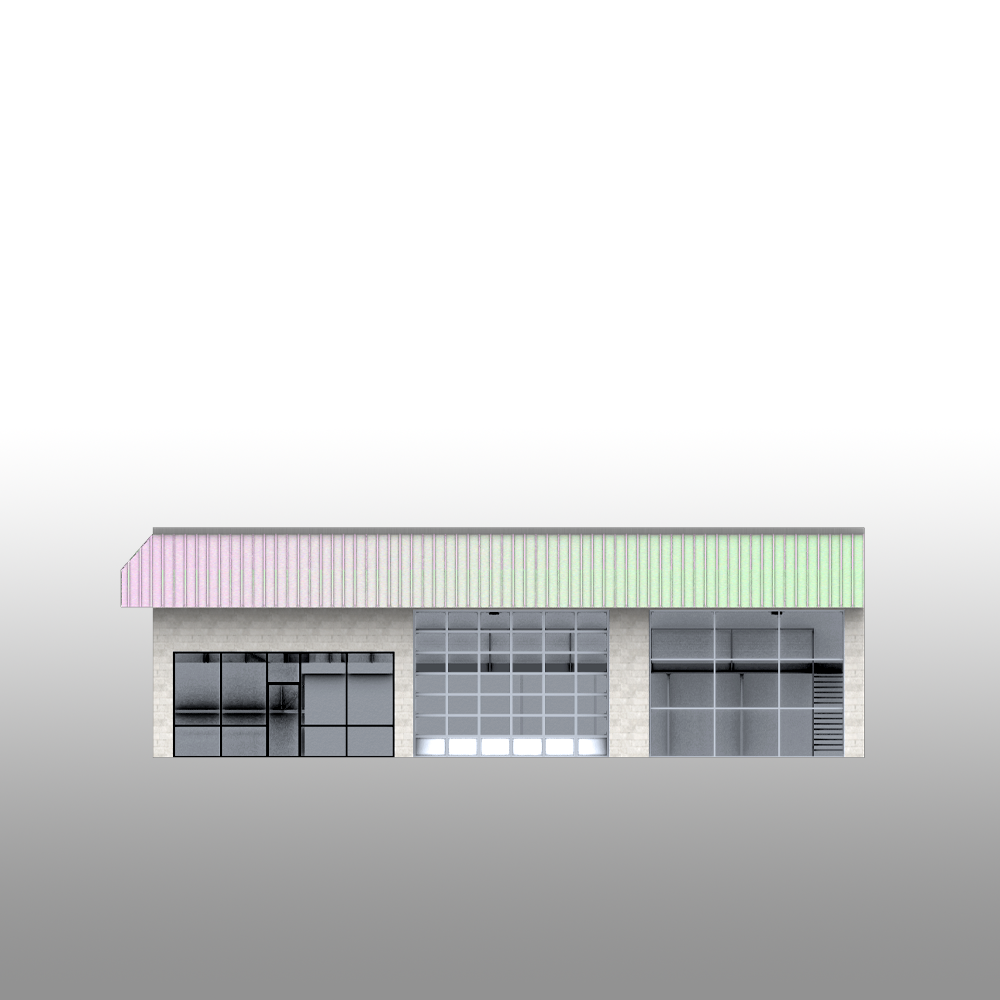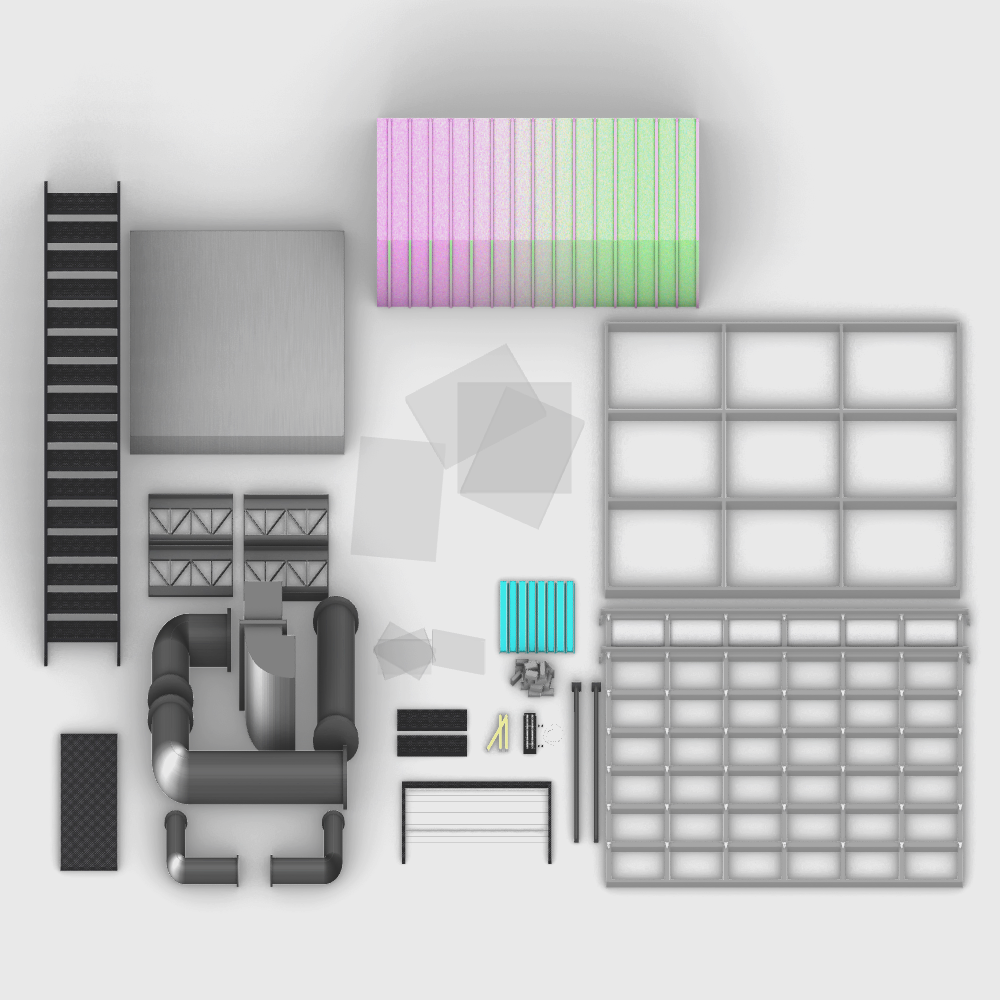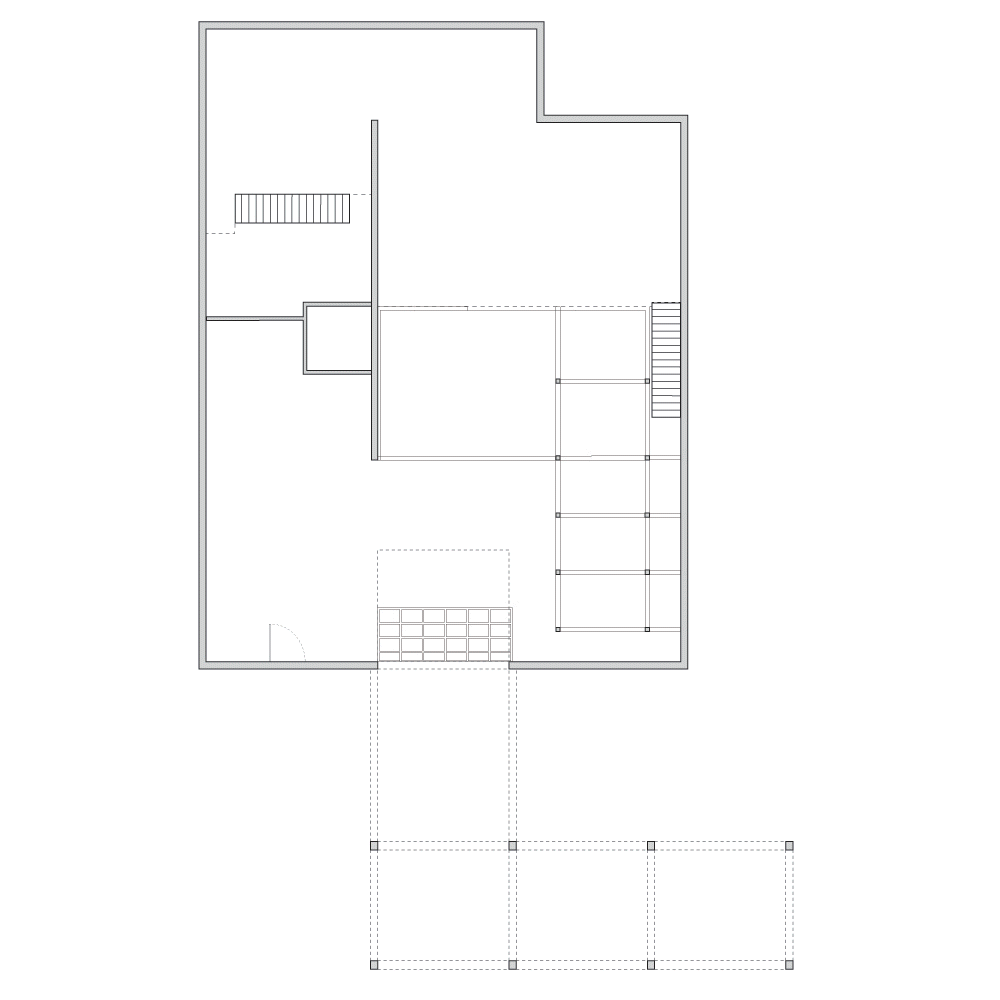SAMPLE PROJECT


This two-story building is on Stadium Boulevard in west Ann Arbor and houses a pet supply store. The walls are constructed with a concrete block and two types of glass curtain wall. There is a large garage door in the middle of the west facade. The roof is flat with metal awnings that span the west and north length of the building where parking and entrances are located.










The interior is divided in two by a large masonry wall that runs east-west. The front of the building is double-height with a mezzanine in the back accessed by stairs on the north and south ends. The mezzanine has two enclosed rooms in the back corner but is otherwise open. Steel web trusses run east-west spanning from the central to outer walls with exposed mechanical ducts running throughout.

This diagram shows the building as a kit-of-parts including a steel grate stair, metal panels, awnings, glass panes, curtain walls, garage door, steel columns, cable railing, ceiling light frame and LED rods, bricks, corrugated metal, mechanical ducts, and steel trusses.
The home stuff map explores four connected research networks focused on each of the products. Each is formatted to follow a product’s life cycle detailing the cultural, historical, socio-political, and environmental dimensions of specific elements. The first stage is extraction (of raw materials) followed by manufacturing, which delves into technical production processes. Distribution focuses on logistics through The transportation, distribution companies culled from location or industry-specific data. The final stage use is the broadest in scope and has the deepest cultural implications.
The landscape portion focuses on the lifecycle of mulch, both organic and inorganic. Extraction is examined through connections to the agricultural industry with both mulch types, with the need to cultivate and harvest through forestry and straw crops along with the natural resources grown, extracted and chemically created to make synthetic rubber. Manufacturing covers labor and equipment conditions through the process of grinding any given material, like wood or recycled rubber tires. The differing scales of the inorganic and organic mulch markets are highlighted in the distribution section, with environmental discourse intersecting both.

My design includes landscape and home stuff assembled by stacking in a gridded organization. There are four grids covering the major exterior and interior spaces of the building. These grids determine the placement and shape of flooring, columns, beams, and displays. Individual materials such as rocks and concrete blocks either stack to produce tiered displays or are embedded in piles. Home stuff shows up on top, inside, or stacked next to the landscape stuff.
Inside the main entry are six square colorfully textured rugs with stacks of landscape blocks supporting the display of home goods. The larger space adjacent allows vehicles to drive in and out to load materials, such as mulch. Below the mezzanine is a gridded arrangement of fences housing appliances. Above is a grid of individual decks displaying additional home goods, such as toilets and vacuums. A steel bridge extends from the mezzanine providing storage for lumber and other building materials.
On the westside exterior of the building is a three bay triangulated glass roof housing three large piles of mulch that are visible to passersby. The glass roof connects to the main building over the garage door forming a covered entryway for vehicles pulling in and out. Along the south wall and adjacent to the loading zone are piles of mulch separated by parallel masonry walls connected to a grid of columns and beams. Large rocks embedded in the mulch serve as display areas for home stuff. A steel platform sits above the piles and serves as additional storage accessible from the mezzanine.








The spatial experience is marked by large piles and stacks that surround linear paths of circulation defined by a grid. The largest piles sit outside the building loosely defining an entry courtyard. Rocks and blocks stack high in the main entry area anchored by colorful squares neatly aligned. The main loading area is the most spacious, both in terms of floor area and ceiling height with multiple levels visible. The space below the mezzanine is the most compressed with low ceilings and tall fence displays that create vertical boundaries to the circulation. The mezzanine and bridge provide views down to the lower levels and place one closer to the structure and mechanical equipment overhead.